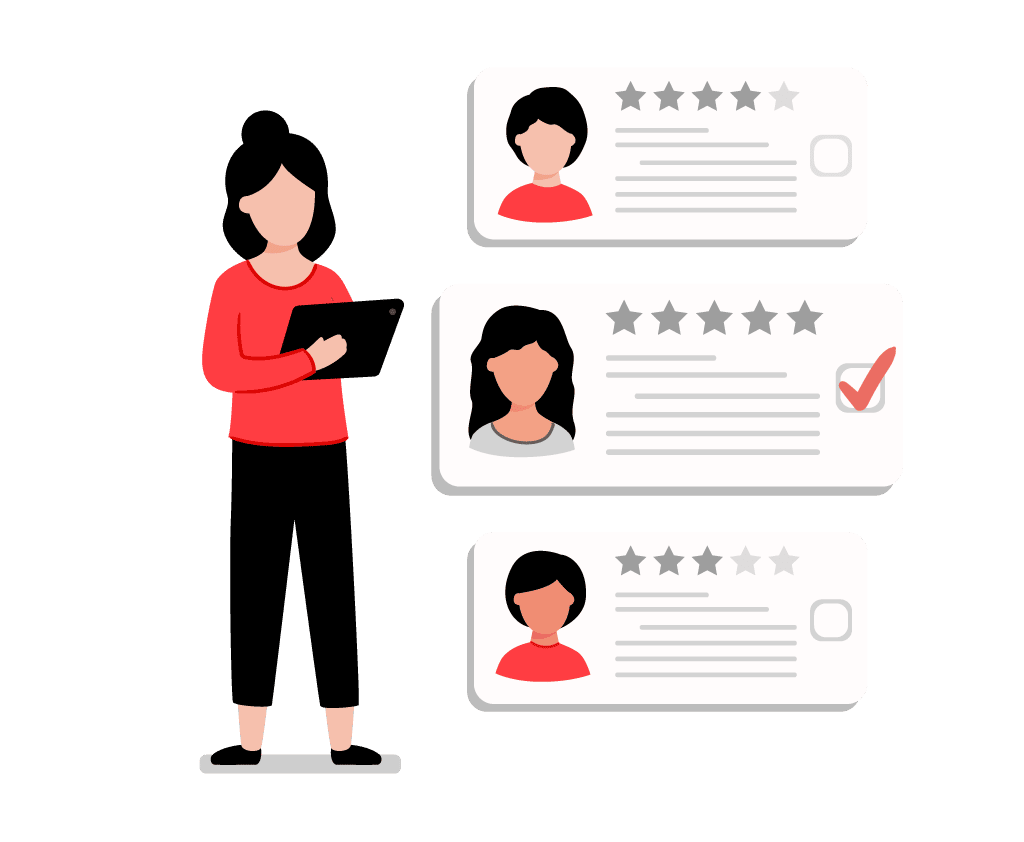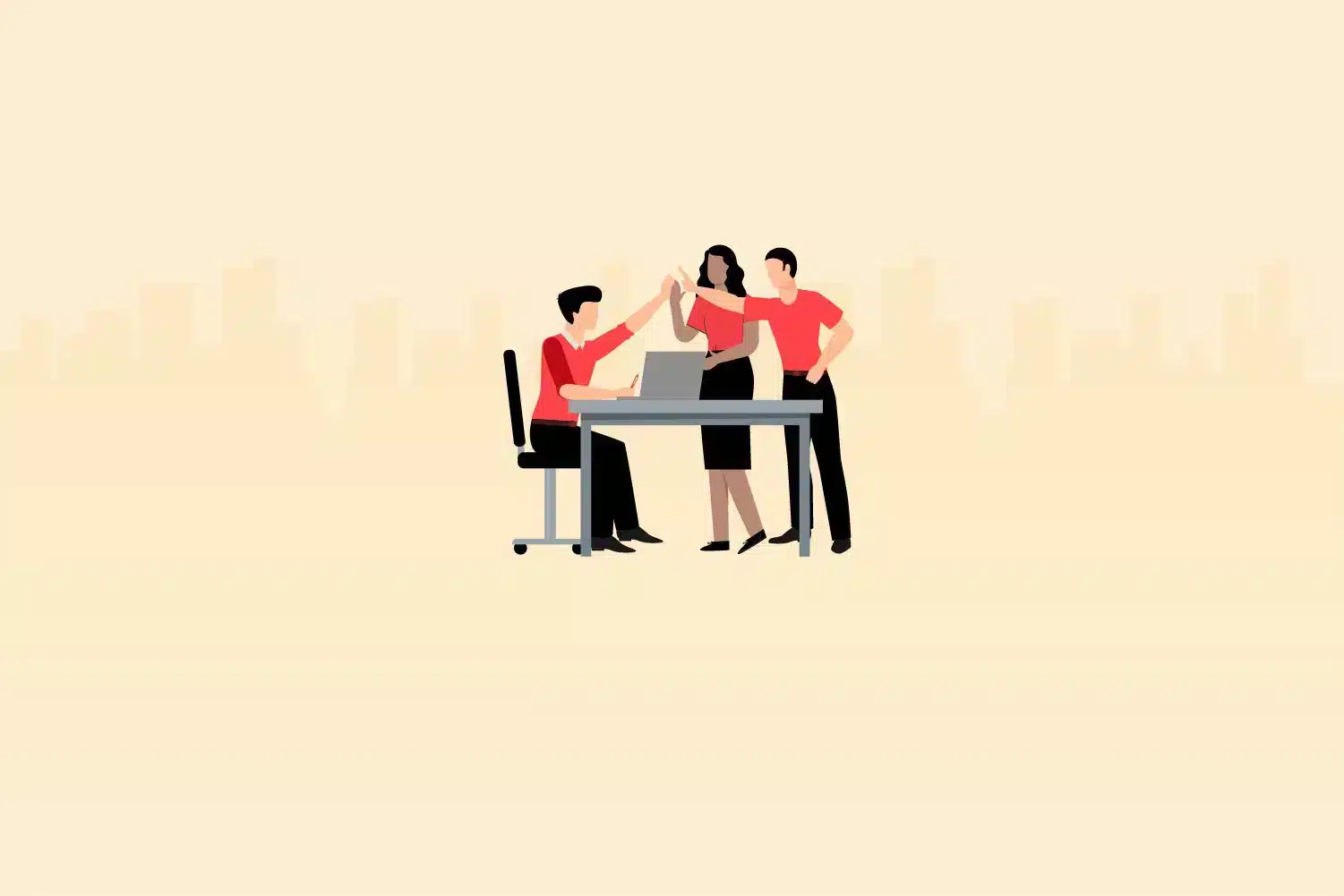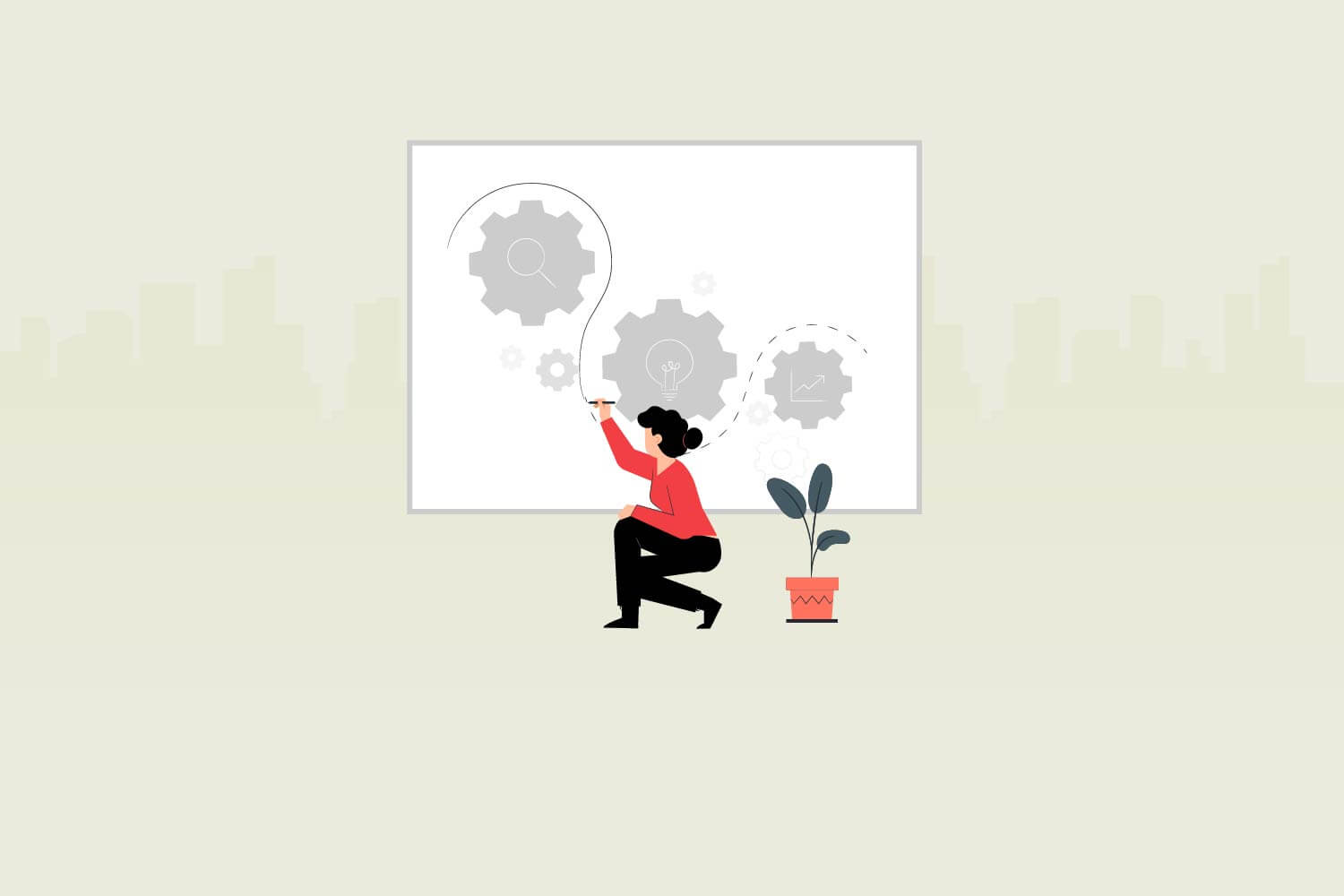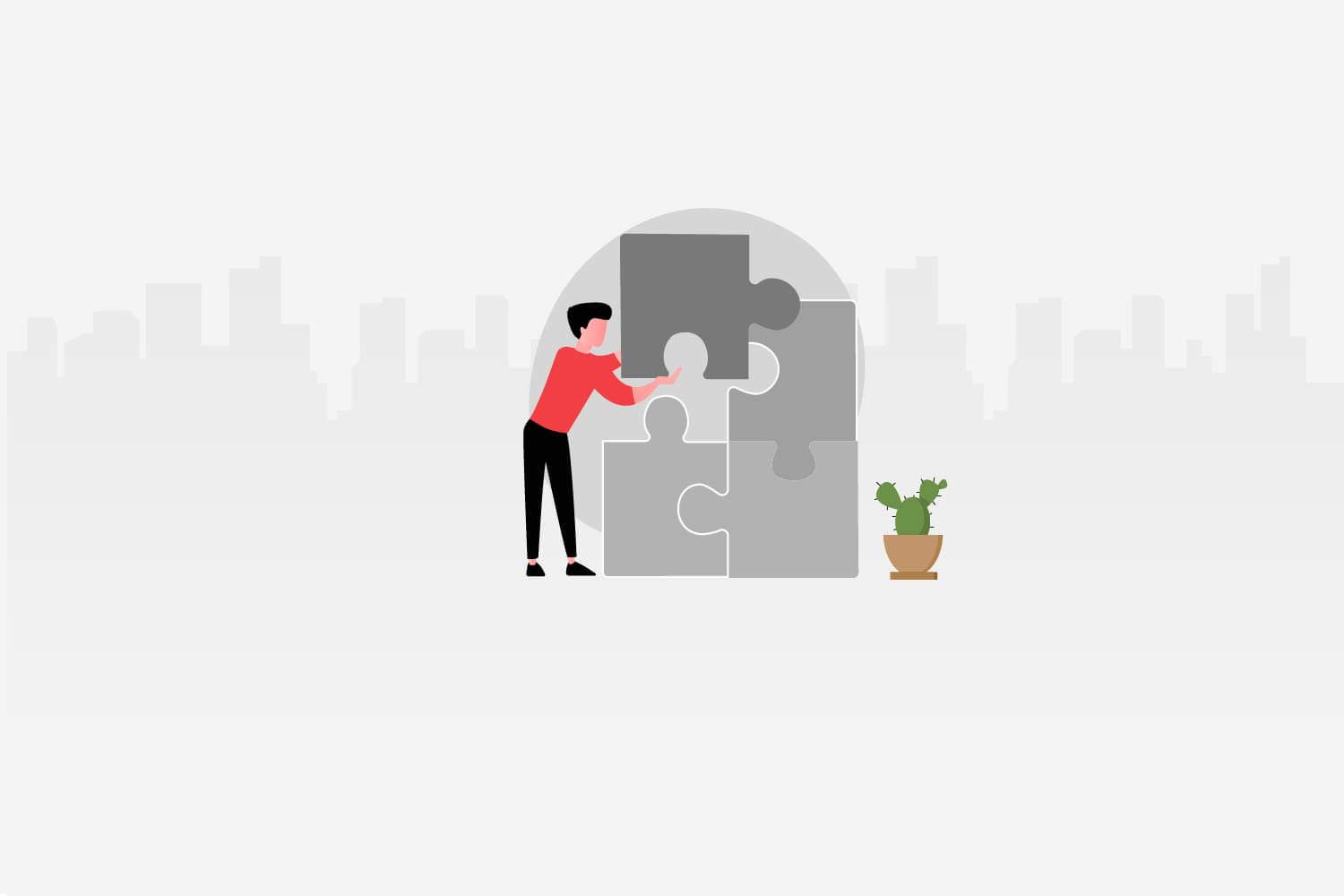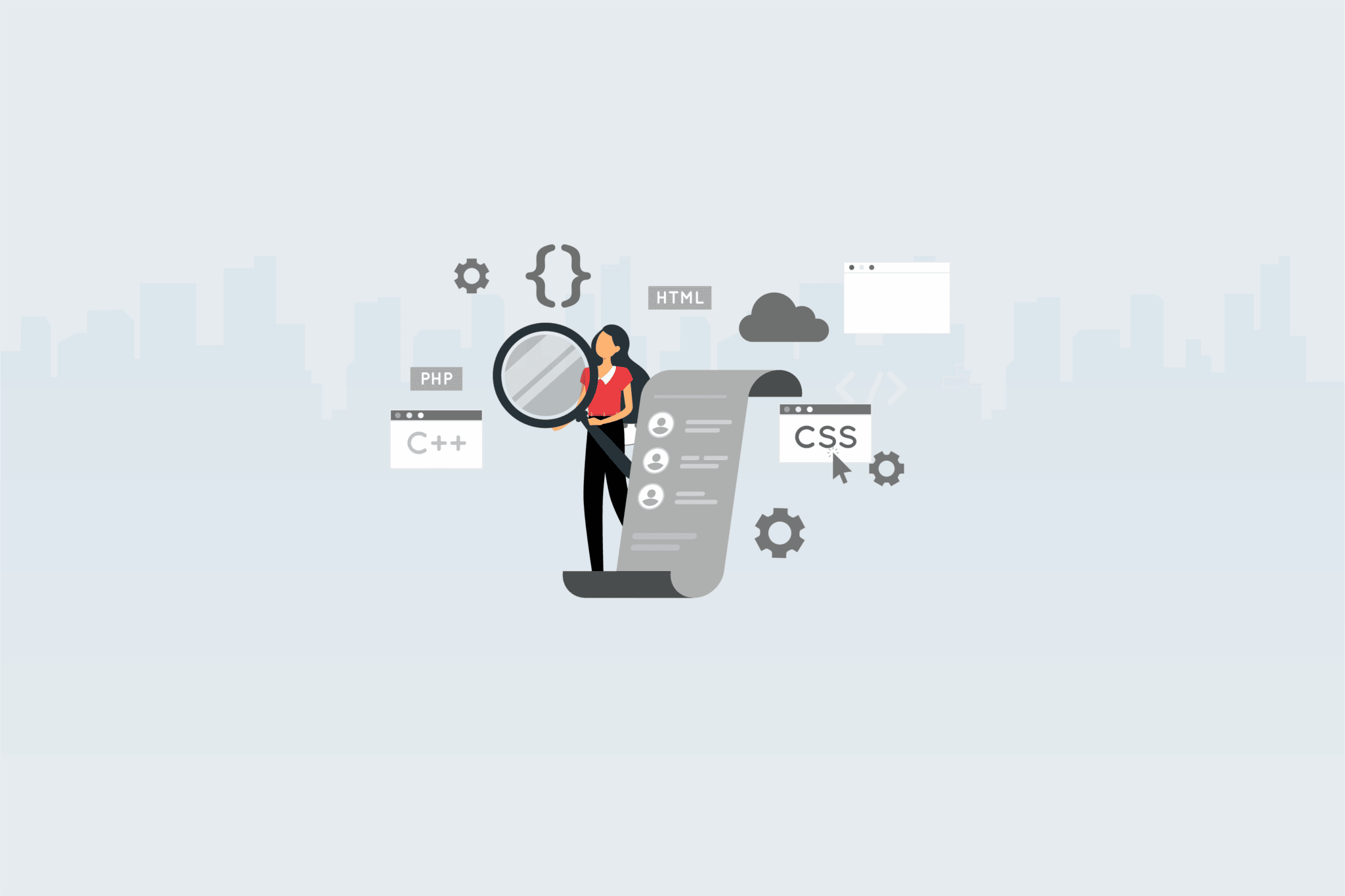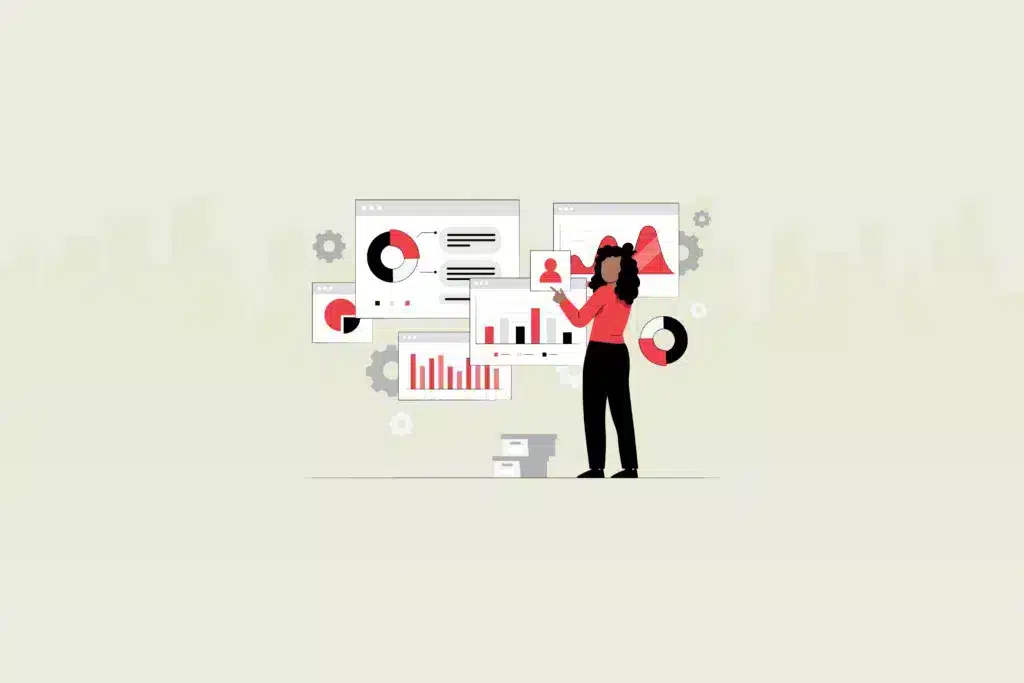As the creative landscape continues to evolve at a rapid pace, the role of the Creative Director has become increasingly vital in shaping and executing innovative strategies across industries. Today, organizations recognize the critical importance of effective creative leadership in driving brand differentiation, customer engagement, and business success.
According to recent analytics, the demand for Creative Directors has seen a remarkable surge, with a 30% increase in job postings over the past year. This recruiting trend underscores the growing recognition of the pivotal role played by Creative Directors in delivering compelling visual experiences, fostering brand loyalty, and driving bottom-line growth. In this competitive environment, HR professionals and CXOs are keen to identify and attract top-tier talent for this crucial leadership position. To aid in the recruitment process, we have curated a set of insightful interview questions that will help evaluate the skills, experience, and vision of prospective Creative Directors, ensuring a successful match between talent and organizational objectives.
Here are the top 60 Creative Director interview questions to ask job applicants:
15 general interview questions for the E-commerce Manager
- Can you share your experience and background in the creative field, highlighting your journey to becoming a Creative Director?
- What does the role of a Creative Director mean to you, and how do you define your responsibilities in this position?
- How do you stay updated with the latest industry trends, technologies, and design practices?
- Can you describe a successful creative project you have led from start to finish? What were the key challenges you faced, and how did you overcome them?
- How do you approach the process of conceptualizing and developing creative ideas? Can you walk us through your creative process?
- Collaboration is essential in a creative team. How do you foster collaboration and maintain effective communication among team members?
- How do you ensure that the creative vision aligns with the overall brand strategy and business goals?
- Can you share an example of a time when you had to handle conflicting feedback from stakeholders? How did you manage the situation and ensure a positive outcome?
- How do you handle tight deadlines and manage multiple projects simultaneously, ensuring quality and timely delivery?
- Can you describe your leadership style and how you motivate and inspire your creative team?
- How do you evaluate and provide constructive feedback on creative work to help improve the overall quality?
- What steps do you take to ensure diversity and inclusion in the creative process and promote representation in the final deliverables?
- Can you share an example of a time when you had to adapt your creative approach to meet the specific needs and preferences of a target audience?
- How do you measure the success of a creative campaign or project? What metrics do you use to evaluate its effectiveness?
- In your opinion, what emerging trends or technologies do you believe will significantly impact the creative industry in the next few years, and how do you plan to adapt to those changes?
5 sample answers to general interview questions for the E-commerce Manager
- Can you share your experience and background in the creative field, highlighting your journey to becoming a Creative Director?
look for: Look for a candidate who can articulate their relevant experience and demonstrate a clear progression in their career, showcasing their growth and development as creative professionals.
Example answer: “I have over 10 years of experience in the creative field, starting as a graphic designer and gradually moving up to senior design roles. Throughout my career, I have worked with diverse clients and industries, which has allowed me to refine my skills and broaden my creative perspective. Recently, I served as the Creative Lead for a renowned digital agency, where I successfully managed a team of designers and delivered award-winning campaigns for global brands.”
- How do you approach the process of conceptualizing and developing creative ideas? Can you walk us through your creative process?
look for: Look for a candidate who can demonstrate a structured and strategic approach to ideation, showcasing their ability to translate concepts into compelling visuals or campaigns.
Example answer: “When it comes to conceptualizing and developing ideas, I start by conducting thorough research on the target audience, market trends, and client objectives. This helps me gain a deep understanding of the context and identify opportunities for innovation. I then collaborate closely with my team, encouraging open discussions and brainstorming sessions to explore diverse perspectives. Once we have a solid concept, I oversee the creative development process, ensuring that the visuals align with the brand identity and communicate the desired message effectively.”
- How do you ensure that the creative vision aligns with the overall brand strategy and business goals?
look for: Look for a candidate who can demonstrate their ability to connect creative concepts with broader strategic objectives, showing their understanding of brand positioning and the impact of design on business outcomes.
Example answer: “To ensure alignment between creative vision and brand strategy, I immerse myself in the brand’s values, target audience, and market positioning. This allows me to develop a deep understanding of the brand’s essence, which I then infuse into the creative direction. I constantly communicate and collaborate with stakeholders to gather insights and feedback, making sure that the creative output is not only visually stunning but also drives tangible results and meets the organization’s broader business goals.”
- How do you foster collaboration and maintain effective communication among team members?
look for: Look for a candidate who can demonstrate strong interpersonal skills, leadership abilities, and an understanding of the importance of teamwork and effective communication in a creative environment.
Example answer: “I strongly believe in fostering a collaborative and inclusive work environment. I encourage open dialogue and active participation within the team, making sure that everyone’s ideas and perspectives are valued. To maintain effective communication, I establish regular check-ins and provide a platform for sharing feedback. Additionally, I promote cross-functional collaboration by organizing brainstorming sessions, workshops, and team-building activities to foster a sense of camaraderie and mutual respect among team members.”
- How do you measure the success of a creative campaign or project? What metrics do you use to evaluate its effectiveness?
look for: Look for a candidate who can demonstrate a data-driven approach to measuring success, using relevant metrics to evaluate the impact and effectiveness of creative work.
Example answer: “I believe in setting clear objectives and key performance indicators (KPIs) at the beginning of a project, which allows us to measure success against predefined benchmarks. Metrics such as click-through rates, engagement levels, conversion rates, and customer feedback are invaluable in assessing the effectiveness of a creative campaign. Additionally, I am keen on conducting post-campaign analyses and leveraging data analytics tools to gather insights and refine future creative strategies based on the observed results.”
15 behavioral interview questions for a Creative Director
- Tell me about a time when you faced a significant creative challenge. How did you approach it, and what was the outcome?
- Describe a situation where you had to balance the needs and expectations of multiple stakeholders in a creative project. How did you manage those relationships and ensure a successful outcome?
- Can you share an example of a time when you had to convince a skeptical client or team member to buy into your creative vision? How did you handle the situation, and what was the result?
- Tell me about a time when you had to deal with a tight deadline or unexpected constraints. How did you manage the situation and ensure the quality of the creative deliverables?
- Describe a project where you had to navigate and adapt to changing requirements or feedback. How did you handle those changes while keeping the project on track?
- Can you share a situation where you had to give constructive feedback to a team member or colleague on their creative work? How did you approach the conversation, and what was the outcome?
- Tell me about a time when you had to resolve a conflict within your creative team. How did you address the issue and restore a positive working environment?
- Describe a time when you had to make a difficult decision that impacted the creative direction or outcome of a project. How did you approach the decision-making process, and what factors did you consider?
- Can you share an example of a time when you took a creative risk that paid off? How did you assess the potential risks and rewards, and what was the impact of your decision?
- Tell me about a project where you had to manage a diverse team with different creative perspectives. How did you foster collaboration and ensure the integration of diverse ideas?
- Describe a situation where you had to handle negative feedback or criticism on your creative work. How did you manage your response and use the feedback to improve the final outcome?
- Can you share an example of a time when you had to champion a new creative idea or approach within your organization? How did you gain support and overcome resistance to implement the change?
- Tell me about a time when you had to manage a creative project with limited resources or budget. How did you prioritize and optimize the available resources to deliver a successful outcome?
- Describe a situation where you had to negotiate with external vendors or contractors to ensure the successful execution of a creative project. How did you handle the negotiation process, and what was the result?
- Can you share an example of a time when you had to mentor or develop a junior member of your creative team? How did you approach their growth and ensure their professional development?
5 sample answers to behavioral interview questions for the Creative Director
- Tell me about a time when you faced a significant creative challenge. How did you approach it, and what was the outcome?
look for: Look for a candidate who can demonstrate their problem-solving skills, creativity, and resilience when facing challenges, as well as their ability to deliver successful outcomes.
Example answer: “In a previous role, we had a client who requested a complete rebranding of their company within a tight timeline. The challenge was to create a fresh and compelling brand identity that captured their values while appealing to their target audience. To approach this challenge, I conducted thorough research, including competitor analysis and market trends, to gain insights. I organized brainstorming sessions with my team to explore creative ideas, and we developed several concepts for the client to choose from. We collaborated closely with the client throughout the process, incorporating their feedback and refining the designs. The outcome was a successful rebranding initiative that revitalized the client’s image, resulting in increased brand recognition and customer engagement.”
- Describe a situation where you had to balance the needs and expectations of multiple stakeholders in a creative project. How did you manage those relationships and ensure a successful outcome?
look for: Look for a candidate who can demonstrate their ability to navigate complex stakeholder dynamics, communicate effectively, and find solutions that meet the needs of all parties involved.
Example answer: “In a recent project, we had multiple stakeholders, including the marketing team, executives, and external partners, each with their own vision and objectives. To manage these relationships, I initiated regular communication channels, including status updates and meetings, to ensure transparency and alignment. I facilitated collaborative discussions to understand each stakeholder’s perspective and concerns, while also educating them about the creative process and its impact. By actively listening and incorporating their input into the creative direction, we were able to find common ground and achieve a successful outcome that satisfied all stakeholders’ needs.”
- Can you share an example of a time when you had to convince a skeptical client or team member to buy into your creative vision? How did you handle the situation, and what was the result?
look for: Look for a candidate who can demonstrate their persuasive skills, ability to build rapport, and strategic thinking in influencing others to embrace their creative ideas.
Example answer: “During a project, I encountered a skeptical client who had reservations about the bold and unconventional creative concept we proposed. To address this, I scheduled a meeting with the client to listen to their concerns and understand their expectations. I presented a detailed rationale for our creative vision, showcasing how it aligned with their brand identity and target audience. Additionally, I shared supporting research and examples of successful campaigns with similar approaches. By actively engaging in discussions, addressing their concerns, and demonstrating the potential impact of our creative vision, I was able to gain their trust and secure their buy-in. As a result, the client became enthusiastic about the concept, and the final campaign garnered positive feedback and exceeded the client’s expectations.”
- Tell me about a time when you had to deal with a tight deadline or unexpected constraints. How did you manage the situation and ensure the quality of the creative deliverables?
look for: Look for a candidate who can demonstrate their ability to thrive under pressure, effectively prioritize tasks, and maintain high standards of quality despite time constraints.
Example answer: “In one instance, we had a project with an unexpectedly shortened deadline due to a last-minute change in the client’s event schedule. To manage the situation, I immediately gathered my team and assessed the project requirements and deliverables. We restructured our workflow, assigning tasks based on individual strengths and time sensitivity. I maintained open lines of communication with the client, updating them on the adjusted timeline while managing their expectations. To ensure the quality of the deliverables, we adopted a streamlined approval process and conducted thorough reviews at each stage. By fostering a sense of urgency, effective communication, and teamwork, we were able to meet the deadline while delivering creative work that met our high-quality standards.”
- Describe a situation where you had to navigate and adapt to changing requirements or feedback. How did you handle those changes while keeping the project on track?
look for: Look for a candidate who can demonstrate flexibility, adaptability, and ability to manage change without compromising the project’s objectives and deadlines.
Example answer: “In a recent project, we received unexpected feedback from the client during the later stages of development, requiring significant changes to the creative direction. To handle these changes, I initiated a meeting with the client to gain a deeper understanding of their concerns and objectives. I reassessed the project timeline, identifying areas that could be adjusted to accommodate the changes without compromising the overall schedule. With open communication and collaboration with my team, we quickly adapted our workflow, reprioritized tasks, and allocated additional resources where needed. By maintaining clear communication channels with the client and proactively managing expectations, we successfully navigated the changes while keeping the project on track and delivering a final product that exceeded the client’s expectations.”
15 personality interview questions for the Creative Director
- How do you stay inspired and motivated in your role as a Creative Director?
- Describe your approach to fostering a positive and inclusive work environment for your creative team.
- How do you handle criticism or setbacks when it comes to your creative work?
- Can you share an example of a time when you took a creative risk and how it paid off?
- How do you balance creativity with the need for practicality and meeting business objectives?
- How do you encourage innovation and fresh ideas within your creative team?
- Can you describe a time when you had to make a decision based on intuition or gut feeling in your creative work?
- How do you handle and adapt to changes in technology and design trends?
- Describe your communication style when collaborating with clients, team members, and stakeholders.
- How do you handle tight deadlines and manage multiple projects without compromising on quality?
- Can you share an example of a time when you successfully managed a challenging client relationship and maintained a positive working dynamic?
- How do you promote continuous learning and professional development within your creative team?
- Describe your leadership style and how it aligns with the unique demands of the creative industry.
- How do you ensure the ethical and responsible use of creativity in your work?
- Can you provide an example of a time when you had to balance conflicting creative opinions within a team and arrive at a satisfactory resolution?
5 sample answers to personality interview questions for the Creative Director
- How do you stay inspired and motivated in your role as a Creative Director?
look for: Look for a candidate who demonstrates a passion for creativity, a proactive approach to staying inspired, and the ability to motivate themselves and their team.
Example answer: “As a Creative Director, I stay inspired by immersing myself in various sources of creativity, such as attending industry events, exploring art exhibitions, and engaging in collaborative discussions with fellow creatives. I also believe in fostering a positive work environment that encourages continuous learning, where team members can share their ideas and inspirations. By celebrating achievements and providing constructive feedback, I motivate myself and my team to constantly push boundaries and create impactful work.”
- How do you balance creativity with the need for practicality and meeting business objectives?
look for: Look for a candidate who can demonstrate their ability to find a balance between creative expression and achieving tangible business goals, showcasing their strategic thinking and understanding of the broader organizational context.
Example answer: “As a Creative Director, I believe in harnessing the power of creativity while also considering practicality and business objectives. I prioritize understanding the client’s brand and objectives and aligning the creative vision with their goals. By collaborating closely with stakeholders, I ensure that the creative work not only meets aesthetic standards but also drives results. This involves striking a balance between pushing creative boundaries and ensuring feasibility within project constraints, budget considerations, and timelines.”
- How do you handle criticism or setbacks when it comes to your creative work?
look for: Look for a candidate who can demonstrate resilience, a growth mindset, and the ability to receive and leverage feedback constructively to improve their work.
Example answer: “I view criticism and setbacks as valuable opportunities for growth. I embrace feedback as a means to refine and enhance my creative work. When faced with criticism, I actively listen, seek to understand the underlying concerns, and leverage the feedback to iterate and improve. I encourage open dialogue within my team, fostering a culture of constructive criticism and continuous improvement. By adopting a growth mindset, I remain open to new perspectives, challenge myself to think differently, and constantly strive to elevate the quality of my creative output.”
- How do you foster a positive and inclusive work environment for your creative team?
look for: Look for a candidate who can demonstrate their ability to create a collaborative and inclusive culture, promoting diversity, respect, and psychological safety within the team.
Example answer: “Creating a positive and inclusive work environment is crucial for unleashing the full potential of a creative team. I foster an atmosphere of mutual respect, where everyone’s ideas and contributions are valued. I encourage open communication and active participation, providing a platform for team members to share their perspectives without fear of judgment. I also ensure that diversity and inclusivity are championed by actively seeking out diverse talent and creating opportunities for underrepresented voices to be heard. By fostering an environment where everyone feels valued and supported, we create a collective space for innovation and creative excellence.”
- How do you promote continuous learning and professional development within your creative team?
look for: Look for a candidate who demonstrates a commitment to fostering a culture of learning, growth, and professional development among their team members.
Example answer: “I believe in the power of continuous learning and growth for myself and my team. To promote professional development, I encourage regular skill-sharing sessions, where team members can showcase their expertise and learn from each other. I also provide access to relevant training programs, conferences, and workshops to help expand their knowledge and stay updated on industry trends. Additionally, I foster a culture of curiosity, where team members are encouraged to explore new techniques, tools, and emerging technologies. By investing in the growth of my team, we collectively elevate our creative capabilities and keep our work fresh, innovative, and impactful.”
When should you use skill assessments in your hiring process for Creative Director?
Skill assessments can be highly beneficial in the hiring process for Creative Directors. They provide objective and standardized methods to evaluate a candidate’s skills, knowledge, and abilities, helping to make more informed hiring decisions. Assessments allow employers to gauge a candidate’s proficiency in specific areas and ensure they possess the necessary skills to excel in the role.
Assessments are important because they go beyond resumes and interviews, providing tangible evidence of a candidate’s capabilities. They help validate the claims made by candidates and provide insights into their practical application of skills. By incorporating skill assessments, employers can identify candidates who possess the right expertise, creativity, problem-solving abilities, and technical proficiency required for a Creative Director position.
Several assessments can be used to assess the skills of Creative Directors. These may include portfolio reviews, design exercises, case studies, or even creative brief assignments. Portfolio reviews allow employers to evaluate the candidate’s previous work, assessing the quality, creativity, and alignment with the organization’s needs. Design exercises and case studies provide candidates with real-life scenarios to demonstrate their problem-solving and decision-making skills. Creative brief assignments assess a candidate’s ability to interpret and deliver on a given creative brief, showcasing their ideation, concept development, and execution skills.
Incorporating skill assessments in the hiring process for Creative Directors ensures a more thorough evaluation of candidates, helping to identify top talent who can drive creative excellence and meet the organization’s objectives.
Use our interview questions and skill tests to hire a talented Creative Director
Unlock the potential of your hiring process with Testlify’s comprehensive skill assessments and interview questions specifically designed for creative directors.
Our extensive test library offers a wide range of assessments, including cognitive function, personality, situational judgment, programming, and more. By leveraging these assessments, you can objectively evaluate candidates’ abilities, ensuring you shortlist the most talented individuals efficiently.
To further enhance your hiring process, we invite you to book a free 30-minute live demo. Our expert team will guide you through the platform, showcasing relevant skill tests tailored to your hiring needs. With our support, you can streamline candidate selection, saving valuable time and resources.
Ready to find the perfect fit for your creative Director role? Testlify provides the tools you need to make informed hiring decisions. Explore our skill assessments and interview questions today to uncover exceptional talent for your team.
